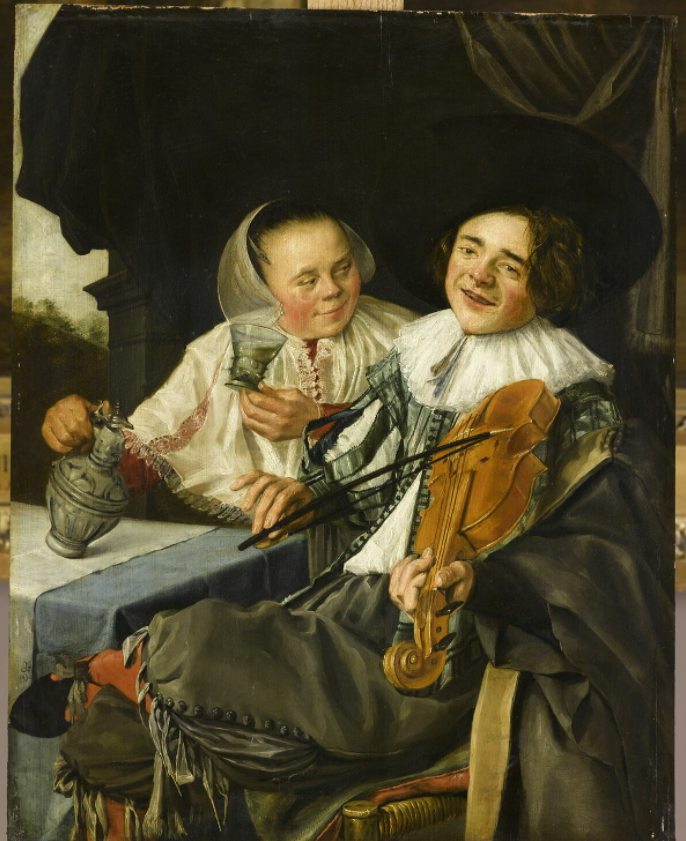Summary


Among many well-known masterpieces exhibited in the Louvre, two fascinating artworks were created by female painters of the XVII and XVIII centuries. One is the picture La Joyeuse Compagnie (1630), painted by Judith Leyster in oil on canvas. Another one is the oil on canvas painting Peace Bringing Back Abundance (1780) by Elisabeth Louise Vigée-LeBrun. This paper will examine the works by Judith Leyster and Elisabeth Louise Vigée-LeBrun.
Judith Leyster was a poorly known Dutch painter of Holland’s Golden Age. La Joyeuse Compagnie, shown in Figure 1, was originally believed to belong to the other painter until, at the end of the XIX century, it was proven otherwise (National Gallery of Art, n.d.). Elisabeth Louise Vigée-LeBrun might be considered “one of the most celebrated women artists of the XVIII century in France” (The National Gallery, n.d.). Peace Bringing Back Abundance, displayed in Figure 2, was created to be admitted to the Academie Royale de Peinture et la Sculpture; it was an entrancing work.
La Joyeuse Compagnie depicts a violinist and a woman beside him in ordinary lighthearted surroundings. In Peace Bringing Back Abundance, there are two people painted as well. However, the overall impression from the artwork is quite eloquent rather than mundane since the women in the painting are shown in expressive divine poses. Overall, the colors applied within both paintings are warm and harmonic. Within La Joyeuse Compagnie, the shades are evidently more contrast and sometimes very vibrant, which creates a visually attractive juxtaposition of colors. The shades of Peace Bringing Back Abundance are warm, but the saturation is less intense than in the other paintings, and the color palette is generally pastel.
In terms of balance, both paintings have reduced the number of details in the background and, oppositely, vivid precision within depicted people. In Peace Bringing Back Abundance, the level of precision while showing the figures is less intense than in the other painting, which creates a sense of lightness and sanctity. Generally, the theme of La Joyeuse Compagnie is the depiction of entertainment in the Dutch Republic during those times. The careless facial expressions of the characters and warm, welcoming tones create a joyful impression. However, as it was common among Dutch Baroque painters, Leyster might have put a deeper symbolic meaning to her work (National Gallery of Art, n.d.). Although the violinist seems carefree and happy, the woman beside him looks at him with a multifaceted expression, open to differing interpretations. Therefore, while depicting something simple and mundane, Leyster might have pinpointed certain details in the painting in order for the spectators to notice it and to reflect on possible deeper meanings of the work.
Elisabeth Louise Vigée-LeBrun creates an allegory as she depicts the female characters of Peace and Abundance (The National Gallery, n.d.). Hence, the theme of the painting can be considered to be sub-historical; therefore, there might be a lot of different meanings and interpretations of this work depending on the spectators. Thus, the way the women in the painting embrace each other and look each other directly in the eyes might refer to the solid link between the concepts of peace and abundance. Similar to the other painting, interpretations of the meaning of the work are flexible and might differ depending on the audience.
Overall, both works are painted with a very careful approach and attention to detail. It is evident that both painters were following the tendencies and expectations of their artistic surroundings. Although the core ideas behind La Joyeuse Compagnie and Peace Bringing Back Abundance differ, the depiction of the themes related to people’s contentment and hopeful happiness unites them in a way. While Lester’s background of being a poorly known painter whose works were thought to belong to someone else brings attention to her paintings, overall, her technique does not necessarily stand out from other Dutch Baroque painters. At the same time, Vigée-LeBrun’s works were widely recognized in France, and she ended up being a part of an Academie, which was not common for women in general.
References
Barringer, F. C. (2020). Creating a Female History Painter: Vigée-Lebrun, Labille-Guiard, Mongez, and the French Academy. The University of Alabama.
Louvre. (n.d.). La Joyeuse Compagnie.
MET. (n.d.). Peace Bringing Back Abundance.
The National Gallery. (n.d.). Elisabeth Louise Vigée Le Brun.
National Gallery of Art. (n.d.). Judith Leyster.